Taekwondo
What is taekwondo?
Taekwondo is a Korean martial art, characterized by its emphasis on head-height kicks, jumping and spinning kicks, and fast kicking techniques.
Taekwondo was developed during the 1940s and 1950s by various martial artists who combined elements of karate and Chinese martial arts with traditional Korean martial arts traditions such as Taekkyeon, Subak, and Gwonbeop.[4][5] The oldest governing body for taekwondo is the Korea Taekwondo Association (KTA), formed in 1959 through a collaborative effort by representatives from the nine original kwans, or martial arts schools, in Korea. The main international organizational bodies for taekwondo today are the International Taekwon-Do Federation (ITF), founded by Choi Hong Hi in 1966, and the partnership of the Kukkiwon and World Taekwondo (WT, formerly WTF), founded in 1972 and 1973 respectively by the Korea Taekwondo Association. Gyeorugi ([kjʌɾuɡi]), a type of full-contact sparring, has been an Olympic event since 2000. The governing body for taekwondo in the Olympics and Paralympics is World Taekwondo.
History of Taekwondo
Beginning in 1945, shortly after the end of the WWII, new martial arts schools called kwans were opened in Seoul. These schools were established by Korean martial artists who had studied primarily in Japan during the Japanese occupation of Korea. The umbrella term traditional taekwondo typically refers to the martial arts practiced by the kwans during the 1940s and 1950s, though in reality the term "taekwondo" had not yet been coined at that time, and indeed each kwan was practicing its own unique style of martial art. During this time taekwondo was also adopted for use by the South Korean military, which increased its popularity among civilian martial arts schools. [6] [7]
After witnessing a martial arts demonstration by the military in 1952, South Korean President Syngman Rhee urged that the martial arts styles of the kwans be merged. Beginning in 1955 the leaders of the kwans began discussing in earnest the possibility of creating a unified style of Korean martial arts. The name Tae Soo Do was used to describe this unified style. This name consists of the hanja 跆 tae "to stomp, trample", 手 su "hand" and 道 do "way, discipline".
Choi Hong Hi advocated the use of the name Tae Kwon Do, i.e. replacing su "hand" by 拳 kwon (Revised Romanization: gwon; McCune–Reischauer: kkwŏn) "fist", the term also used for "martial arts" in Chinese (pinyin quán). The new name was initially slow to catch on among the leaders of the kwans. In 1959 the Korea Taekwondo Association (KTA) was established to facilitate the unification of Korean martial arts. In 1966, Choi established the International Taekwon-Do Federation (ITF) as a separate governing body devoted to institutionalizing a common style of taekwondo. [6][7]
Cold War politics of the 1960s and 1970s complicated the adoption of ITF-style taekwondo as a unified style, however. The South Korean government wished to avoid North Korean influence on the martial art. Conversely, ITF president Choi Hong Hi sought support for the martial art from all quarters, including North Korea. In response, in 1973 South Korea withdrew its support for the ITF. The ITF continued to function as an independent federation, then headquartered in Toronto, Canada; Choi continued to develop the ITF-style, notably with the 1987 publication of his Encyclopedia of Taekwondo. After Choi's retirement the ITF split in 2001 and then again in 2002 to create three separate federations each of which continues to operate today under the same name.
In 1973 the South Korean government's Ministry of Culture, Sports and Tourism established the Kukkiwon as the new national academy for taekwondo. Kukkiwon now served many of the functions previously served by the KTA, in terms of defining a government-sponsored unified style of taekwondo. In 1973 the KTA supported the establishment of the World Taekwondo Federation (WTF, renamed to World Taekwondo, WT, in 2017 due to confusion with the initialism[8]) to promote taekwondo specifically as an international sport. WT competitions employ Kukkiwon-style taekwondo. [6] [9] For this reason, Kukkiwon-style taekwondo is often referred to as WT-style taekwondo, sport-style taekwondo, or Olympic-style taekwondo, though in reality the style is defined by the Kukkiwon, not the WT.
Since 2000, taekwondo has been one of only two Asian martial arts (the other being judo) that are included in the Olympic Games. It became a demonstration event at the 1988 games in Seoul, and became an official medal event at the 2000 games in Sydney. In 2010, taekwondo was accepted as a Commonwealth Games sport.
Theory of power
The emphasis on speed and agility is a defining characteristic of taekwondo and has its origins in analyses undertaken by Choi Hong Hi. The results of that analysis are known by ITF practitioners as Choi's Theory of Power. Choi based his understanding of power on biomechanics and Newtonian physics as well as Chinese martial arts. For example, Choi observed that the power of a strike increases quadratically with the speed of the strike, but increases only linearly with the mass of the striking object. In other words, speed is more important than size in terms of generating power. This principle was incorporated into the early design of taekwondo and is still used. [7] [12]
Choi also advocated a relax/strike principle for taekwondo; in other words, between blocks, kicks, and strikes the practitioner should relax the body, then tense the muscles only while performing the technique. It is believed that the relax/strike principle increases the power of the technique, by conserving the body's energy. He expanded on this principle with his advocacy of the sine wave technique. This involves raising one's center of gravity between techniques, then lowering it as the technique is performed, producing the up-and-down movement from which the term "sine wave" is derived. [12] The sine wave is generally practiced, however, only in schools that follow ITF-style taekwondo. Kukkiwon-style taekwondo, for example, does not employ the sine wave and advocates a more uniform height during movements, drawing power mainly from the rotation of the hip.
Teaching Taekwondo
As mentioned above, each taekwondo club and school is different therefore there is not single way to teach taekwondo. However, there are a few basic training techniques that can help students achieve certain skills in tae kwon do. Forms are usually practiced through repetition. Learning one half of the form and then moving on to the next half is the technique that is most often used. Then of course, even after students complete the form, it is necessary to critique them on the specifics. Students should master all of the stances in the current form before moving on to the next form. Chambering should be emphasized and it is helpful to explain why chambering is necessary and how each initial position helps execute force. For kicking, teaching snapping is extremely important for learning how to do proper kicks. Students typically line up against a wall or something they can place their hand on for balance, lift their knee up, and repeatedly practicing bending the leg in and snapping it out. This helps students gain the necessary muscles to have stronger, clean, and more accurate kicks. This general strategy can also be used for different kicks. Students can lean against the wall, lift their legs up close to their belly button and repeatedly shoot their leg out to practice side kick or they can shift the angle of their hips downwards and repeat the same thing to practice back kick. This type of practice is about building the muscle and carefully practicing the proper technique. By using targets, students can practice the accuracy of their kicks as well as transitioning from one kick to the other. You can either do target training to practice one kick over and over and carefully critique it so to get the proper technique or you can do a combination of kicks to improve balance and transitioning. It is also important to practice agility and endurance.
Ranks, belts, and promotion
Taekwondo ranks vary from style to style and are not standardized. Typically, these ranks are separated into "junior" and "senior" sections, colloquially referred to as "color belts" and "black belts". The junior section of ranks - the "color belt" ranks - are indicated by the Korean word geup 급 (also Romanized as gup or kup). Practitioners in these ranks generally wear belts ranging in color from white (the lowest rank) to red (higher ranks, depending on the style of taekwondo). Belt colors may be solid, or may include a colored stripe on a solid background. The number of geup ranks varies depending on the style, typically ranging between 8 and 12 geup ranks. The numbering sequence for geup ranks usually begins at the larger number for white belts, and then counts down to "1st geup" as the highest color-belt rank.
The senior section of ranks - the "black belt" ranks - is typically made up of nine ranks. Each rank is called a dan 단 or "degree" (as in "third dan" or "third-degree black belt"). The numbering sequence for dan ranks is opposite that of geup ranks: numbering begins at 1st dan (the lowest black-belt rank) and counts upward for higher ranks. A practitioner's degree is sometimes indicated on the belt itself with stripes, Roman numerals, or other methods.
Some styles incorporate an additional rank between the geup and dan levels, called the "bo-dan" rank—essentially, a candidate rank for black belt promotion. Additionally, the Kukkiwon/WT-style of taekwondo recognizes a "poom" rank for practitioners under the age of 15: these practitioners have passed dan-level tests but will not receive dan-level rank until age 15. At age 15, their poom rank is considered to transition to equivalent dan rank automatically. In some schools, holders of the poom rank wear a half-red/half-black belt rather than a solid black belt.
To advance from one rank to the next, students typically complete promotion tests in which they demonstrate their proficiency in the various aspects of the art before their teacher or a panel of judges. Promotion tests vary from school to school, but may include such elements as the execution of patterns, which combine various techniques in specific sequences; the breaking of boards to demonstrate the ability to use techniques with both power and control; sparring and self-defense to demonstrate the practical application and control of techniques; physical fitness usually with push-ups and sit-ups; and answering questions on terminology, concepts, and history to demonstrate knowledge and understanding of the art. For higher dan tests, students are sometimes required to take a written test or submit a research paper in addition to taking the practical test.
Promotion from one geup to the next can proceed rapidly in some schools, since schools often allow geup promotions every two, three, or four months. Students of geup rank learn the most basic techniques first, and then move on to more advanced techniques as they approach first dan. Many of the older and more traditional schools often take longer to allow students to test for higher ranks than newer, more contemporary schools, as they may not have the required testing intervals. In contrast, promotion from one dan to the next can take years. In fact, some styles impose age or time-in-rank limits on dan promotions. For example, the number of years between one dan promotion to the next may be limited to a minimum of the practitioner's current dan-rank, so that (for example) a 5th dan practitioner must wait 5 years to test for 6th dan.
Black belt ranks may have titles associated with them, such as "master" and "instructor", but taekwondo organizations vary widely in rules and standards when it comes to ranks and titles. What holds true in one organization may not hold true in another, as is the case in many martial art systems. For example, achieving first dan ( black belt) ranking with three years' training might be typical in one organization, but considered too quick in another organization, and likewise for other ranks. Similarly, the title for a given dan rank in one organization might not be the same as the title for that dan rank in another organization.
In the International Taekwon-Do Federation, instructors holding 1st to 3rd dan are called Boosabum (assistant instructor), those holding 4th to 6th dan are called Sabum (instructor), those holding 7th to 8th dan are called Sahyun (master), and those holding 9th dan are called Saseong (grandmaster).[28] This system does not, however, necessarily apply to other taekwondo organizations.
In the American Taekwondo Association, instructor designations are separate from rank. Black belts may be designated as an instructor trainee (red collar), specialty trainer (red and black collar), certified trainer (black-red-black collar) and certified instructor (black collar). After a one-year waiting period, instructors who hold a sixth dan are eligible for the title of Master. Seventh dan black belts are eligible for the title Senior Master and eighth dan black belts are eligible for the title Chief Master.
In the Kukkiwon/WT-style students holding 1st-3rd dan are considered an Instructor, but generally have much to learn. Students who hold a 4th - 6th dan are considered Masters. Those who hold a 7th - 9th dan are considered Grandmasters. This rank also holds an age requirement of 40+.[29] In this style, a 10th dan rank is sometimes awarded posthumously for practitioners with a lifetime of demonstrable contributions to the practice of taekwondo.
Historical influences
The oldest Korean martial arts were an amalgamation of unarmed combat styles developed by the three rival Korean Kingdoms of Goguryeo, Silla, and Baekje,[30] where young men were trained in unarmed combat techniques to develop strength, speed, and survival skills. The most popular of these techniques were ssireum, subak, and taekkyeon. The Northern Goguryeo kingdom was a dominant force in Northern Korea and North Eastern China prior to the 1st century CE, and again from the 3rd century to the 6th century. Before the fall of the Goguryeo Dynasty in the 6th century, the Shilla Kingdom asked for help in training its people for defense against pirate invasions. During this time a few select Silla warriors were given training in taekkyeon by the early masters from Goguryeo. These Silla warriors then became known as Hwarang or "blossoming knights." The Hwarang set up a military academy for the sons of royalty in Silla called Hwarang-do {花郎徒}, which means "flower-youth corps." The Hwarang studied taekkyeon, history, Confucian philosophy, ethics, Buddhist morality, social skills, and military tactics. The guiding principles of the Hwarang warriors were based on Won Gwang's five codes of human conduct and included loyalty, filial duty, trustworthiness, valor, and justice. [31]
In spite of Korea's rich history of ancient and martial arts, Korean martial arts faded during the late Joseon Dynasty. Korean society became highly centralized under Korean Confucianism, and martial arts were poorly regarded in a society whose ideals were epitomized by its scholar-kings. [32] Formal practices of traditional martial arts such as subak and taekkyeon were reserved for sanctioned military uses. However, taekkyeon persisted into the 19th century as a folk game during the May-Dano festival, and was still taught as the formal military martial art throughout the Joseon Dynasty.
Competition
Taekwondo competition typically involves sparring, breaking, patterns, demonstration teams, and self-defense (hosinsul). In Olympic taekwondo competition, however, only sparring (using WT competition rules) is performed.[42]
There are two kinds of competition sparring: point sparring, in which all strikes are light contact and the clock is stopped when a point is scored; and Olympic sparring, where all strikes are full contact and the clock continues when points are scored. Sparring involves a Hogu, or a chest protector, which muffles any kick's damage to avoid serious injuries. Helmets and other gear is provided as well. Though other systems may vary, a common point system works like this: One point for a regular kick to the Hogu, two for a turning behind kick, three for a back kick, and four for a spinning kick to the head.
World Taekwondo
Under World Taekwondo (WT, formerly WTF) and Olympic rules, sparring is a full-contact event and takes place between two competitors in either an area measuring 8 meters square or an octagon of similar size.[43] Competitors are matched within gender and weight division - 8 divisions for World Championships that are condensed to 4 for the Olympics. A win can occur by points, or if one competitor is unable to continue (knockout). However, there are several decisions that can lead to a win, as well, including superiority, withdrawal, disqualification, or even a referee's punitive declaration.[44] Each match consists of three two-minute rounds, with one minute rest between rounds, though these are often abbreviated or shortened for some junior and regional tournaments.[43] Competitors must wear a hogu, head protector, shin pads, foot socks, forearm guards, hand gloves, a mouthpiece, and a groin cup. Tournaments sanctioned by national governing bodies or the WT, including the Olympics and World Championship, use electronic hogus, electronic foot socks, and electronic head protectors to register and determine scoring techniques, with human judges used to assess and score technical (spinning) techniques and score punches.[43]
Points are awarded for permitted techniques delivered to the legal scoring areas, as determined by the electronic scoring system, which assesses the strength and location of the contact. The only techniques allowed are kicks (delivering a strike using an area of the foot below the ankle) and punches (delivering a strike using the closed fist). In some smaller tournaments, and in the past, points were awarded by three corner judges using electronic scoring tallies. All major national and international tournaments have moved fully (as of 2017) to electronic scoring, including the use of electronic headgear. This limits corner judges to scoring only technical points and punches. Some believe that the new electronic scoring system reduces controversy concerning judging decisions,[45] but this technology is still not universally accepted.[46] In particular the move to electronic headgear has replaced controversy over judging with controversy over how the technology has changed the sport. Because the headgear is not able to determine if a kick was a correct taekwondo technique, and the pressure threshold for sensor activation for headgear is kept low for safety reasons, athletes who improvised ways of placing their foot on their opponents head were able to score points, regardless of how true to taekwondo those techniques were.[47]
A punch that makes contact with the opponent's hogu (the body guard that functions as a scoring target) scores one point, while a kick scores two points. (The trunk protector is referred to as a momtong pohodae 몸통 보호대 or trunk guard in the WT rules.) If a kick to the hogu involves a technique that includes fully turning the attacking competitor's body, so that the back is fully exposed to the targeted competitor during execution of the technique (spinning kick), three points are awarded. A kick to the head scores three points; as of October 2010 an additional point is awarded if a turning kick was used to execute this attack, making a spinning head kick worth 4 points.[48] Punches to the head are not allowed. As of October 2017, no additional points are awarded for knocking down an opponent (beyond the normal points awarded for legal strikes).
The referee can give penalties at any time for rule-breaking, such as hitting an area not recognized as a target, usually the legs or neck. Penalties, called "Gam-jeom" are counted as an addition of one point for the opposing contestant. Following 10 "Gam-jeom" a player is declared the loser by referee's punitive declaration[43]
At the end of three rounds, the competitor with most points wins the match. In the event of a tie, a fourth "sudden death" overtime round, sometimes called a "Golden Point", is held to determine the winner after a one-minute rest period. In this round, the first competitor to score a point wins the match. If there is no score in the additional round, the winner is decided by superiority, as determined by the refereeing officials[48] or number of fouls committed during that round.
If a competitor has a 20-point lead at the end of the second round or achieves a 20-point lead at any point in the third round, then the match is over and that competitor is declared the winner.[43]
USA Taekwondo is the officially recognized National Governing Body for Taekwondo for the United States Olympic Committee (USOC), and the official Member National Association of the World Taekwondo Federation.
In addition to sparring competition, World Taekwondo sanctions competition in poomsae or forms, although this is not an Olympic event. Single competitors perform a designated pattern of movements, and are assessed by judges for accuracy (accuracy of movements, balance, precision of details) and presentation (speed and power, rhythm, energy), both of which receive numerical scores, with deductions made for errors.[49] Pair and team competition is also recognized, where two or more competitors perform the same form at the same time. In addition to competition with the traditional forms, there is experimentation with freestyle forms that allow more creativity.

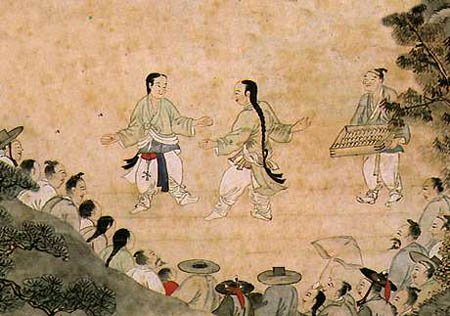
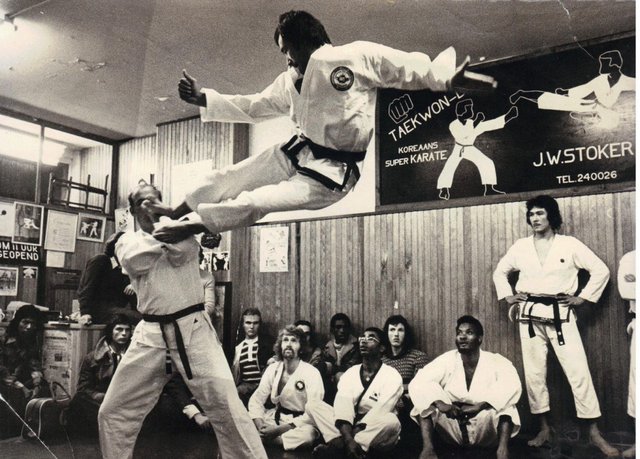
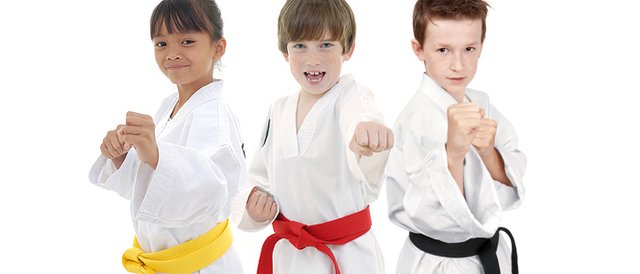
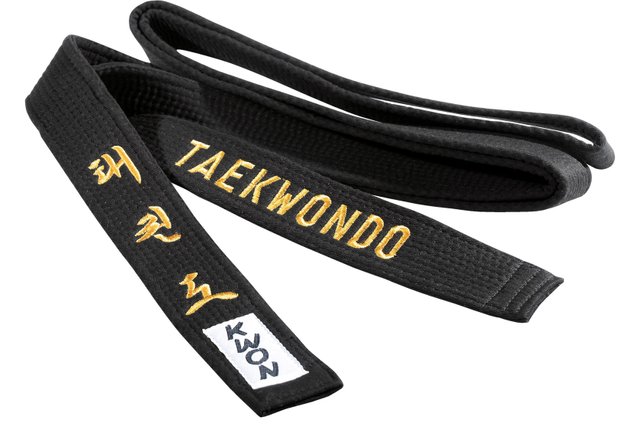
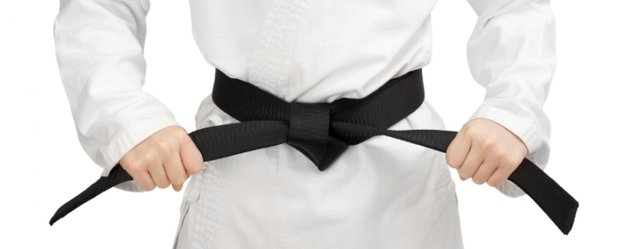
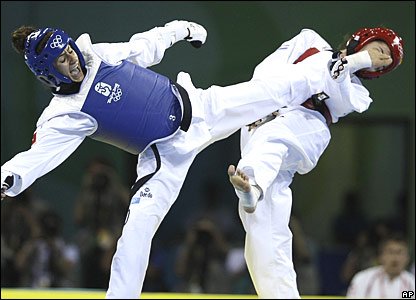
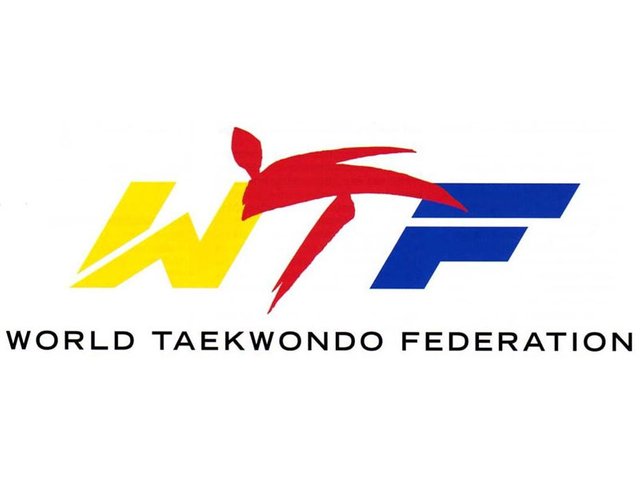
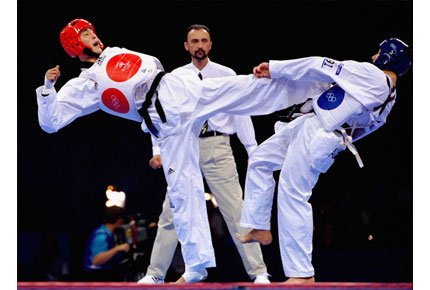
With a backround in Taekwondo and know what it is this was nice to read.
Congratulations @genievoi! You received a personal award!
You can view your badges on your Steem Board and compare to others on the Steem Ranking
Vote for @Steemitboard as a witness to get one more award and increased upvotes!